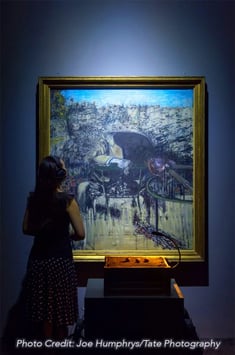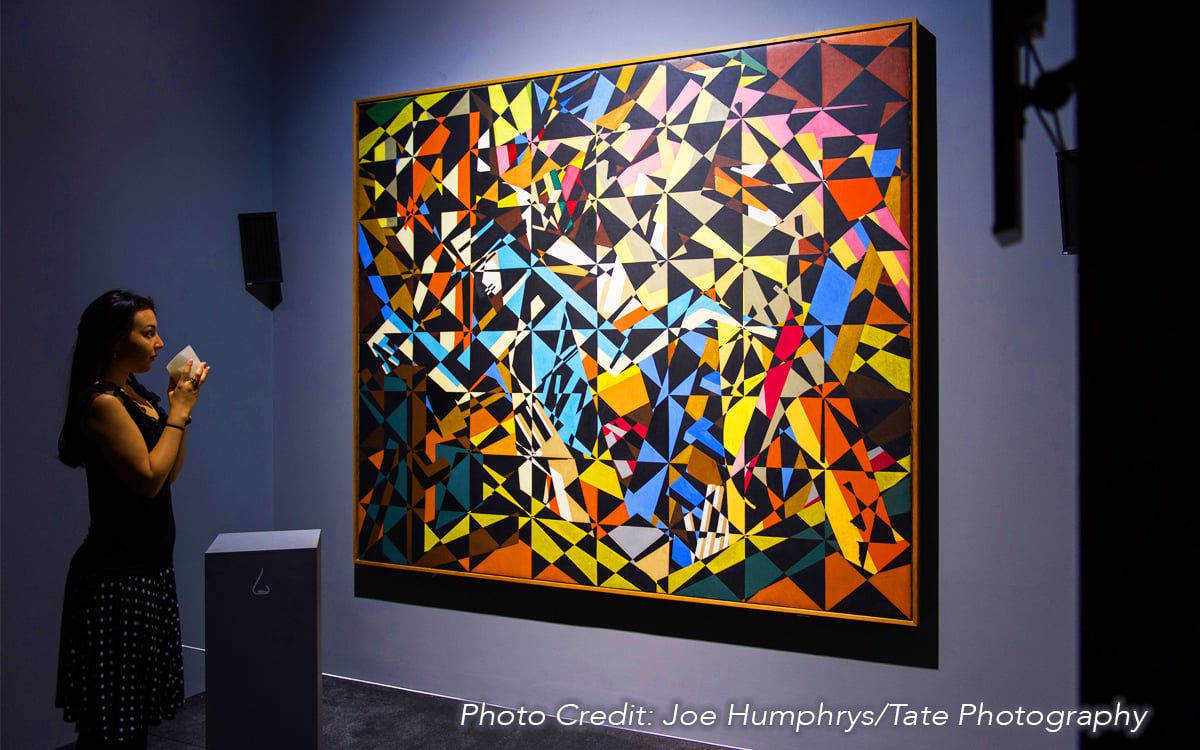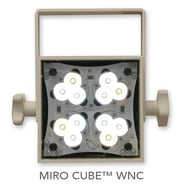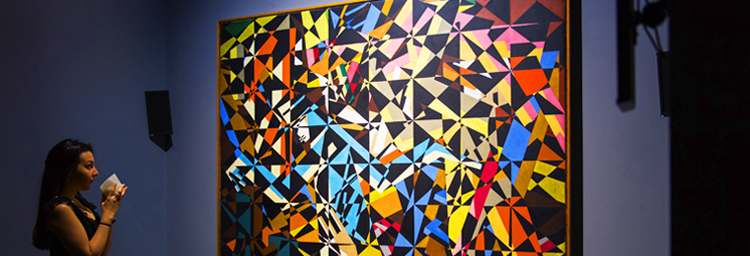Tate Sensorium was a multi-sensory art display that sought to engage people in art in a novel way. The exhibition ran at Tate Britain last fall and recently won the museum’s IK Prize, which is awarded annually for an idea that uses innovative technology to enable the public to discover, explore and enjoy British art at the Tate in new ways.
The concept of the installation, conceived by Flying Object, features four modern paintings by Richard Hamilton, John Latham, David Bomberg and Francis Bacon that explore how taste, touch, smell and sound might change the way we see art.
Whether visitors experienced Francis Bacon’s Figure in a Landscape while listening to mechanised, industrial sounds or David Bomberg’s In The Hold through two different scents, the Tate Sensorium engaged other senses of the body – not just sight.
 The lighting, nevertheless, was just as important in creating the overall experience as it ever is in an art installation. Among the experts that collaborated with Flying Object to bring the project to life was lighting designer Cis O’Boyle who chose to use Rosco’s Miro Cube WNC LED fixtures to accentuate the texture and colour of the paintings. The Miro Cubes allowed O’Boyle to compose her illumination with the precise colour temperature and beam angle she needed in order to create the dramatic tension she was looking for. The Miro WNC lighting Bacon’s Figure in a Landscape, for example, was set at 5300K with a 20° lens, while the fixture lighting Bomberg’s In The Hold was set at 4600K with a 40° lens.
The lighting, nevertheless, was just as important in creating the overall experience as it ever is in an art installation. Among the experts that collaborated with Flying Object to bring the project to life was lighting designer Cis O’Boyle who chose to use Rosco’s Miro Cube WNC LED fixtures to accentuate the texture and colour of the paintings. The Miro Cubes allowed O’Boyle to compose her illumination with the precise colour temperature and beam angle she needed in order to create the dramatic tension she was looking for. The Miro WNC lighting Bacon’s Figure in a Landscape, for example, was set at 5300K with a 20° lens, while the fixture lighting Bomberg’s In The Hold was set at 4600K with a 40° lens.
O’Boyle’s ability to control the colour temperature and the beam spread allowed O’Boyles lighting design to contribute in making the audience experience the paintings as they were intended for this exhibition – in a new and intense way. “The Rosco Miro Cube WNC fixtures seemed to be the perfect lighting solution for our installation at Tate,” O’Boyle stated. “We needed DMX control along with variable colour temperatures and beam angles to give our audience a non-traditional and innovative way of experiencing the paintings. Initially it was difficult to specify an LED gallery-lighting solution that could do all of these things. When I sampled the Miro Cube I was really impressed with its smooth dimming and its capacity for mimicking the fading glow of a tungsten filament as it dims out. The unit is compact & simple to use, and its variable whites are great for LEDs. I think Miro Cubes would make a wonderful permanent addition to a gallery/museum or performance space – they are high performance, Swiss Army Knife luminaries.”

Rosco Miro Cubes embody a perfect balance between quality of light and energy efficiency. The 50 Watt WNC model offers a colour temperature range of 2700K-6500K; and the 4C model offers full colour-mixing, which allows designers to determine the proper colour appearance of an object as well as communicating the intended mood to the visitor. Each unit ships with a complete set of optical spread lenses that enables designers to use the fixture as a spotlight for accentuating small areas, or as a flood light for illuminating large objects or installations. A full range of additional Miro Cube beam control accessories, such as snoots and barn doors, is also available.
 To learn more about this self-contained, compact and unique LED fixture, visit the Miro Cube web page. If you’d like to see how they were used in another museum project – read this blog post to learn how over 850 Miro Cubes are illuminating the world-class automobiles on display at the Petersen Automotive Museum in Los Angeles.
To learn more about this self-contained, compact and unique LED fixture, visit the Miro Cube web page. If you’d like to see how they were used in another museum project – read this blog post to learn how over 850 Miro Cubes are illuminating the world-class automobiles on display at the Petersen Automotive Museum in Los Angeles.
Save
Save
Save
Save
Save


